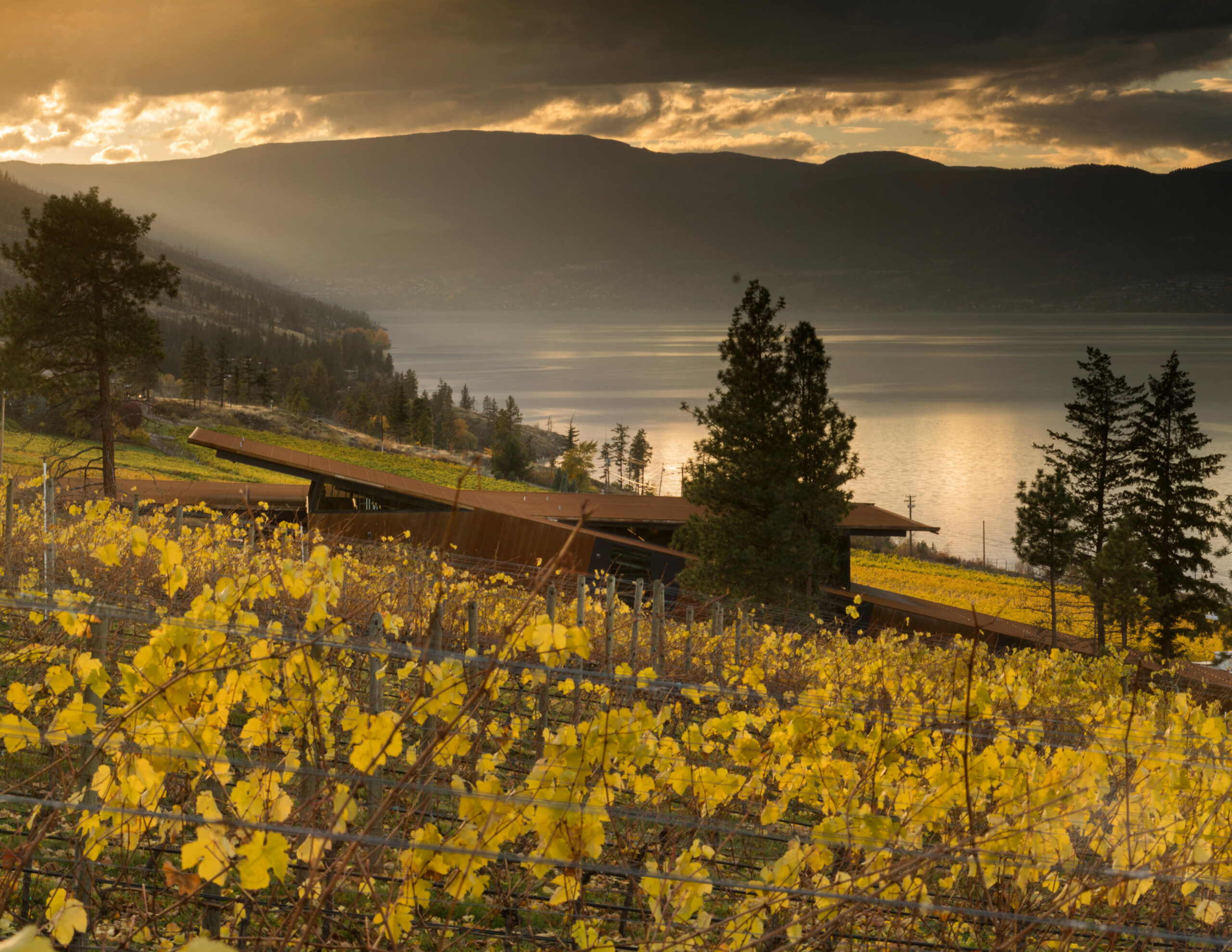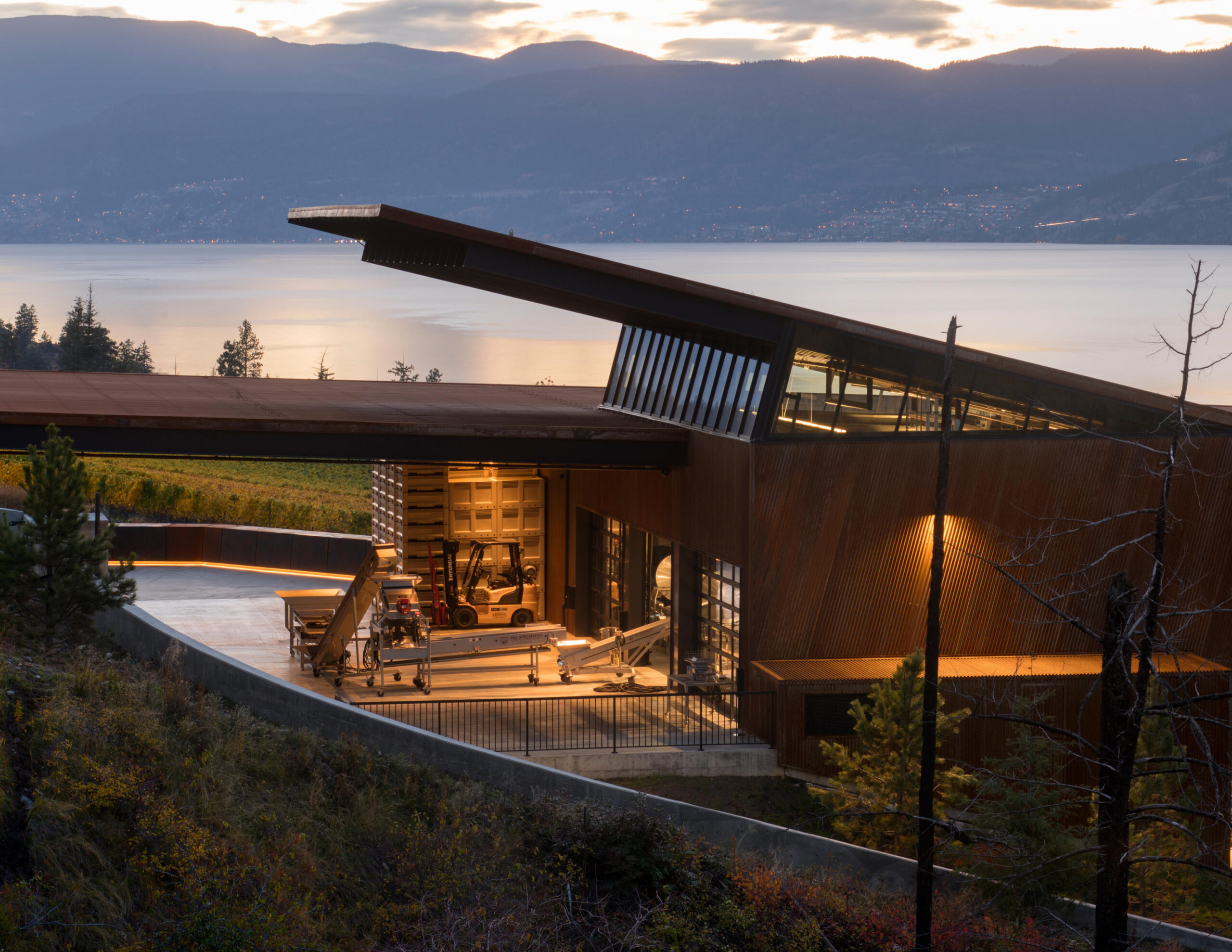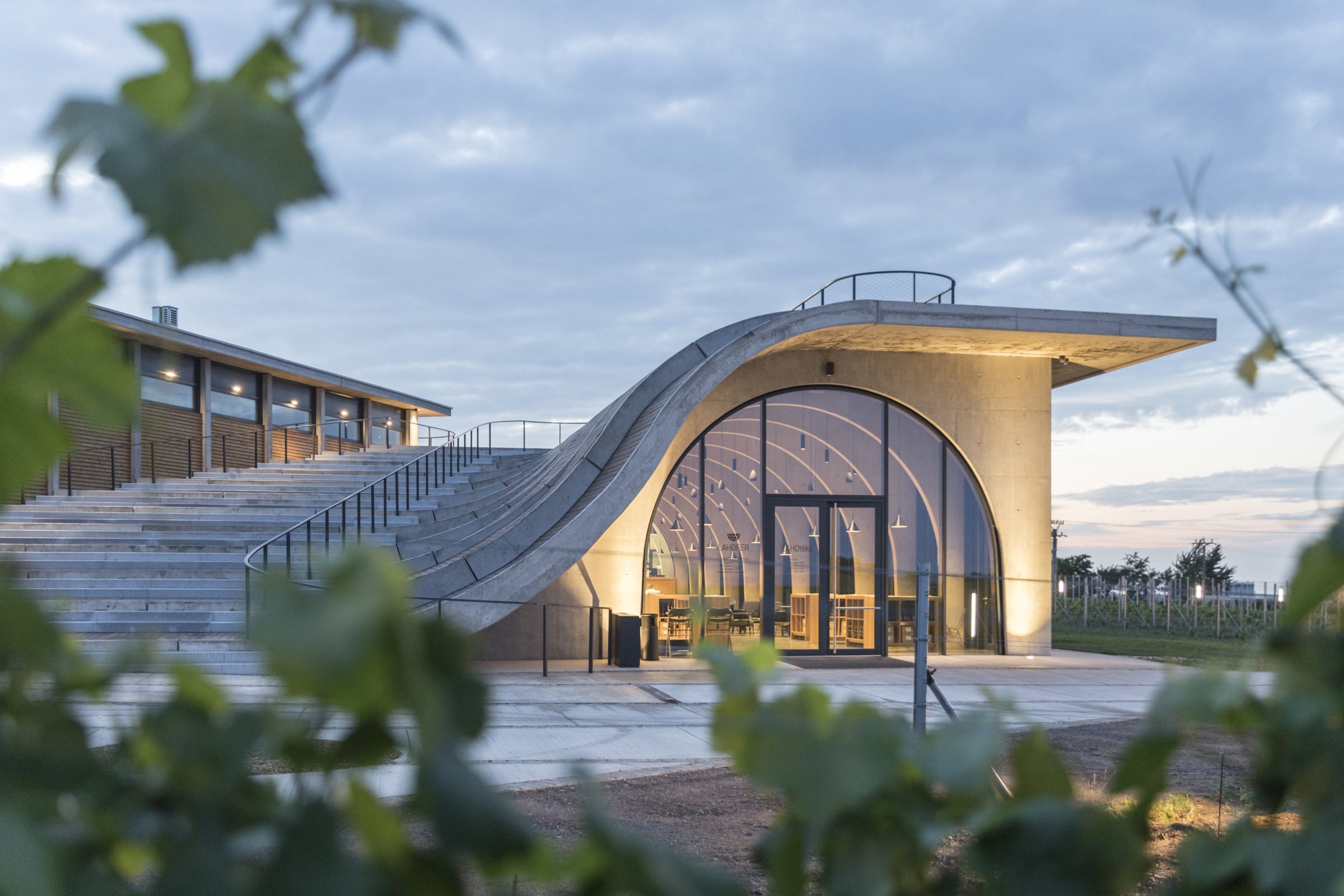Ema is a trained architect, writer and photographer who works as a Junior Architect at REX in NYC. Inspired by her global experiences, she shares captivating insights into the world’s most extraordinary cities and buildings and provides travel tips on her blog, The Travel Album.
Wineries have become more than just places to produce and sell wine; they are destinations that offer an immersive experience combining nature, architecture and culture. As architects and designers behind the designs of these facilities, there are key considerations and factors that are integral to the design process. Architects’ goals for these projects extend beyond simply creating a functional space for producing and storing beverages; they seek to craft an unforgettable visitor experience.
Having previously worked on the design of a distillery, which shares many similarities with a winery, I found the process fascinating from both the perspective of the final design, as well as the architectural planning stage. Wineries are unique facilities that demand particular elements and characteristics, customized to suit their specific audience and purpose. These elements are vital not only for maintaining a well-functioning facility but also for attracting visitors to experience the wine, the building, and the grounds, and to learn about the winemaking process.
Each winery has its own story, with distinctive architecture within its unique landscape. The following design elements are, in my opinion, essential for making wineries not only successful operations but also irresistible destinations for the public, transforming them from simple production sites into comprehensive visitor experiences.
1. Scenic Location and Views


Martin’s Lane Winery by Olson Kundig, Kelowna, Canada
A winery’s location is pivotal in creating an appealing visitor experience. Part of the allure of visiting a winery is the journey itself, often taking you to a more remote, countryside location where the trip becomes an exciting part of the overall experience. Martin’s Lane Winery, for instance, exemplifies how incorporating the natural landscape into its design, essentially embedding the structure into the hillside, enhances both the aesthetic and emotional impact on visitors with its spectacular outward views. Set amidst picturesque vineyards and rolling hills, the architecture leverages expansive glass walls and terraces to frame stunning views, making the environment an integral part of the visitor experience.
2. Striking Architectural Design
Delas Frères Winery 40 by Carl Fredrik Svenstedt Architecte, Tain-l’Hermitage, France
One of the main reasons to visit any facility is the architecture itself. The more intriguing the design, the more likely people will be drawn to visit and explore. Architectural design is a key element that can distinguish a winery from other buildings. The Delas Frères Winery is a prime example, where contemporary design meets traditional winemaking. The building is a landmark in itself, featuring bold yet simple and clean lines and an innovative use of structural stone that creates a striking visual identity, drawing visitors in. The undulating facade offers an exciting experience for visitors both inside and outside the building, with its natural, fluid shape inviting people to walk along and explore the site.
3. Tasting Rooms and Visitor Centers
LA Winery by Kreatif Architects, İzmir, Turkey
The design and integration of tasting rooms and visitor centers are crucial for creating an engaging experience. These spaces facilitate physical interaction among visitors, tour guides, the facility, and the final product — the wine itself. The LA Winery showcases how thoughtfully designed interiors can enhance the tasting experience. Large, open spaces with the use of natural light, contemporary furnishings, and a layout that encourages social interaction makes the tasting room a welcoming space. Tasting rooms can be designed in countless ways to complement the overall theme or atmosphere of the building, reflecting the architects’ chosen ambiance for that space. This design invites visitors to linger, learn about the wines, and enjoy the atmosphere.
4. Outdoor Spaces
Quinta de Santo António Hotel & Winery by Atelier Sérgio Rebelo, Tabuaço, Portugal
Outdoor spaces at wineries offer visitors the chance to connect with one another and the natural environment while enjoying their wine. Quinta de Santo António Hotel & Winery demonstrates the importance of beautifully landscaped gardens, terraces, picnic areas and even a pool. The building itself follows the natural topography of the site, incorporating curves and undulations, with the fragmented buildings thoughtfully arranged around a central courtyard. All the elements of nature — the sounds of the outdoors, water, breeze, birds and rustling leaves — are audible and visible from within and around the building, creating an immersive experience of being one with nature.
5. Culinary Offerings
50th Parallel Estate Winery by SAHURI + Partners Architecture, Lake Country, Canada
A winery’s culinary offerings can significantly enhance the overall visitor experience. As visitors often travel a considerable distance to reach the winery, and given that the surrounding area may not offer many other amenities, providing a space where guests can share and enjoy culinary offerings becomes crucial, especially since they tend to stay for extended periods of time. Food and wine are ultimately a perfect pairing. The 50th Parallel Estate Winery integrates its architectural design with a strong emphasis on culinary excellence. With a backdrop of stunning vineyards, the winery’s outdoor restaurant seamlessly blends indoor and outdoor dining areas, opening up on both sides to the surrounding landscape.
6. Educational Tours and Interactive Experiences
Covert Estate Winery by Signum Architecture, Napa, California
Educational tours and interactive experiences are essential for engaging visitors and deepening their appreciation of winemaking. Visitors tend to seek to deepen their understanding of wine — its production, history, and the hands-on experience of witnessing its creation — to feel fully engaged in the process. The Covert winery showcases how architectural design can facilitate these experiences. Touring this building allows visitors to explore spaces specifically designed for guided tours, with interactive displays, and hands-on activities, offering a comprehensive and engaging understanding of the winemaking process. The winemaking process is prominently showcased throughout the building, guiding visitors through each stage as they move from one area to the next.
7. Event Spaces and Cultural Activities
Lahofer Winery by CHYBIK + KRISTOF, Dobšice, Czechia
Event spaces and cultural activities add a dynamic aspect to winery visits, attracting a diverse range of visitors. They provide another compelling reason for visitors to want to explore the facility. The Lahofer Winery incorporates multifunctional spaces that host events, concerts, and cultural activities. In this example, the building’s design plays a crucial role in creating these event spaces, with sloped roofs and stepped areas that offer creatively integrated tiered seating. The architectural design includes an amphitheater and open spaces that can accommodate various events, enhancing the winery’s appeal as a cultural hub and attracting more than just wine enthusiasts.
The architecture of a winery plays a vital role in making it an irresistible destination. From leveraging scenic locations and incorporating striking designs to creating welcoming tasting rooms and multifunctional event spaces, the thoughtful integration of these elements can enhance the visitor experience and elevate the winery’s appeal. As wineries evolve into multifaceted destinations, the role of architecture in crafting memorable and engaging experiences remains pivotal to their relevance, ensuring continued visitor interest both now and in the future.
Architects: Want to have your project featured? Showcase your work by uploading projects to Architizer and sign up for our inspirational newsletters.
